| Gaddang Revolt | |||||||
|---|---|---|---|---|---|---|---|
| |||||||
The Irraya Revolt, also known as the Gaddang Revolt (Tagalog : Pag-aalsa ng mga Gaddang) was an uprising by the Gaddang people of Northern Isabela that transpired on 6 November 1621. It was led by Felipe Cuntapay and Gabriel Dayag.
| Gaddang Revolt | |||||||
|---|---|---|---|---|---|---|---|
| |||||||
The Irraya Revolt, also known as the Gaddang Revolt (Tagalog : Pag-aalsa ng mga Gaddang) was an uprising by the Gaddang people of Northern Isabela that transpired on 6 November 1621. It was led by Felipe Cuntapay and Gabriel Dayag.
On November 6, 1621, the residents of Abbuatan erected on a Friday a cross in the churchyard with much uproar and rejoicings by the natives. After two days, the Gaddang people in Abbuatan led by the convent bred, 23 year-old Felipe Cuntapay (Felix Cuntabay in othermanuscripts and the acknowledged “governor of Abbuatan”) and his brother Gabriel Dayag, rose in arms because they were oppressed by vicious Spanish officials. The Irraya villages which rallied to their cause were: Abbuatan, Batavag, Bolo and Pilitan. Fray Alonso Hernandez tried to convince the insurgents but failed. Instead, the rebels requested the good priest to leave the place. After the departure of the missionaries, the Irrayas began their uprising killing the encomenderos and Spanish officials and burned their houses. After the bloody killing and looting, the rebels went up the Basili (Balisi in other manuscripts) River and built a fortification on a hill. Bernardo Lumaban and his wife Agustina Pamma saved a mutilated image of the Blessed Virgin in a muddy place after the bloody rebellion and looting. For their actions, the insurrects seized and detained them in prison. [1] : 3
They revolted against the encomenderos and government officials and the oppression of Spanish officials. [1] [2]
Fray Alonzo Hernandez, a Dominican missionary, tried to pacify them but they refused. [3] There was a fight against abusive officials and not against friars who were "good to them", with all their ornaments and jewels of the churches. [3] [2] They went up the Balili River and built a fortification on a rocky hill. [3] [2] Pedro de Santo Tomas, a Dominican missionary, attempted to persuade the rebel leaders Felipe Cuntapay and Gabriel Dayag to surrender peacefully. Along with other missionaries, Santo Tomas were allowed to leave unharmed. Santo Tomas went back and finally succeeded in convincing the Gaddangs to lay down their arms, And thus, ending the revolt. [4]

The military history of the Philippines is characterized by wars between Philippine kingdoms and its neighbors in the precolonial era and then a period of struggle against colonial powers such as Spain and the United States, occupation by the Empire of Japan during World War II and participation in Asian conflicts post-World War II such as the Korean War and the Vietnam War. The Philippines has also battled a communist insurgency and a secessionist movement by Muslims in the southern portion of the country.

Isabela, officially the Province of Isabela, is the second largest province in the Philippines in land area located in the Cagayan Valley. Its capital and the largest local government unit is the city of Ilagan. It is bordered by the provinces of Cagayan to the north, Kalinga to the northwest, Mountain Province to the central-west, Ifugao and Nueva Vizcaya to the southwest, Quirino, Aurora and the independent city of Santiago to the south, and the Philippine Sea to the east.
Diego Silang y Andaya was a Filipino revolutionary leader who allied with British forces to overthrow Spanish rule in the northern Philippines and establish an independent Ilocano state. His revolt was fueled by grievances stemming from Spanish taxation and abuses, and by his belief in self-government, that the administration and leadership of the Roman Catholic Church and government in the Ilocos be invested in trained Ilocano officials. His wife, the Itneg Gabriela Cariño, took on leadership of his revolt after his assassination.

Alicia, officially the Municipality of Alicia, is a 1st class municipality in the province of Isabela, Philippines. According to the 2020 census, it has a population of 73,874 people.
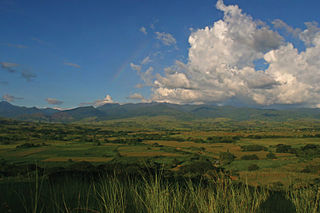
Cabagan, officially the Municipality of Cabagan, is a 1st class municipality in the province of Isabela, Philippines. According to the 2020 census, it has a population of 53,897 people.
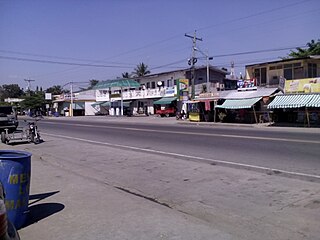
Mallig, officially the Municipality of Mallig, is a landlocked 4th class municipality in the province of Isabela, Philippines. The municipality has a land area of 133.40 square kilometers or 51.51 square miles which constitutes 1.07% of Isabela's total area. Its population as determined by the 2020 Census was 32,208.
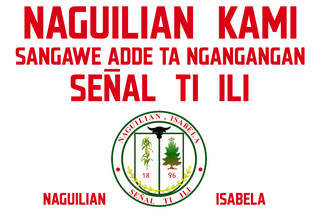
Naguilian, officially the Municipality of Naguilian, is a 4th class municipality in the province of Isabela, Philippines. According to the 2020 census, it has a population of 33,788 people.

San Pablo, officially the Municipality of San Pablo, is a 2nd class municipality in the province of Isabela, Philippines. According to the 2020 census, it has a population of 26,320 people.

Solano, officially the Municipality of Solano, is a 1st class municipality in the province of Nueva Vizcaya, Philippines. According to the 2020 census, it has a population of 65,287 inhabitants..

As part of the worldwide Catholic Church, the Catholic Church in the Philippines, or the Philippine Catholic Church or Philippine Roman Catholic Church, is part of the world's largest Christian church under the spiritual leadership of the Pope in Rome. The Philippines is one of the two nations in Asia having a substantial portion of the population professing the Catholic faith, along with East Timor, and has the third largest Catholic population in the world after Brazil and Mexico. The episcopal conference responsible in governing the faith is the Catholic Bishops' Conference of the Philippines (CBCP).
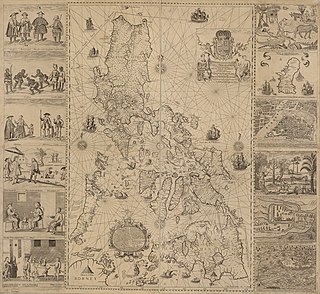
During the Spanish colonial period in the Philippines (1565–1898), there were several revolts against the Spanish colonial government by indigenous Moro, Lumad, Indios, Chinese (Sangleys), and Insulares, often with the goal of re-establishing the rights and powers that had traditionally belonged to Lumad communities, Maginoo rajah, and Moro datus. Some revolts stemmed from land problems and this was largely the cause of the insurrections that transpired in the agricultural provinces of Batangas, Ilocos sur, Cavite, and Laguna. Natives also rebelled over unjust taxation and forced labor.

Francisco de Tello de Guzmán was Spanish governor of the Philippines from July 14, 1596 to May 1602. He was a knight of the Order of Santiago.

The University of Santo Tomas Faculty of Civil Law or "UST Law" is a law school in Manila, Philippines. It is administered under the jurisdiction of the University of Santo Tomas, the oldest existing university in the Asia. It is one of the three law schools of the University of Santo Tomas in Manila, with the other two being the Faculty of Canon Law and the Graduate School of Law.
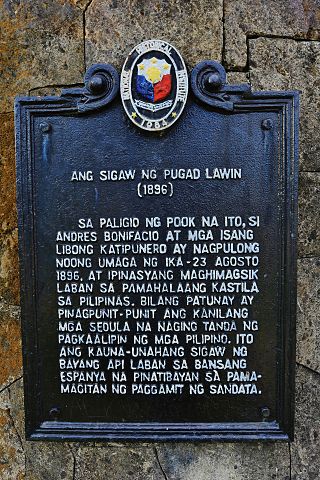
The Cry of Pugad Lawin was the beginning of the Philippine Revolution against the Spanish Empire.
The Bankaw revolt (1621–1622) was a religious uprising against Spanish colonial rule led by Bankaw or Bancao, datu of Limasawa, Carigara, Abuyog, Sogod. He warmly accepted Miguel Lopez de Legazpi when he arrived in the Philippines in 1564, and was converted as a Christian. Being hospitable toward de Legazpi and his men, he received a letter of gratitude from the Spanish King, Philip II. He also received a gift from the king in recognition of his grandfather's hospitality to Ferdinand Magellan. Though he was one of the first converts of Catholicism under de Legazpi, he left his faith and allegiance to the Spanish after around fifty years. Together with a babaylan named Pagali and his children, he built a temple for a diwata, and he incited people from six towns to participate in the revolt. It is believed that Pagali used some magic to attract followers, and thought that they could turn the Spaniards into clay by hurling bits of earth at them.

The Gaddang are an indigenous peoples and a linguistically identified ethnic group residing for centuries in the watershed of the Cagayan River in Northern Luzon, Philippines. Gaddang speakers were recently reported to number as many as 30,000, a number that does not include another 6,000 related Ga'dang speakers or other small linguistic-groups whose vocabularies are more than 75% identical.

Saint James the Great Parish Church, commonly known as Bolinao Church, is a Spanish colonial Roman Catholic church located at Brgy. Germinal in Bolinao, Pangasinan, Philippines. It is under the jurisdiction of the Diocese of Alaminos. The church was made out of black coral stones. The church underwent series of natural and man-made calamities, such as the 1788 earthquake, 1819 fire incident, and Typhoon Emong in 2009.

The Cathedral of Saint Michael the Archangel, also known as Saint Michael Cathedral and formerly known as Saint Ferdinand Cathedral, is a Roman Catholic cathedral located in the town of Gamu, in the province of Isabela, Philippines. Before the cathedral was built, the former seat of the Roman Catholic Diocese of Ilagan was located in Saint Ferdinand Proto-Cathedral in Barangay Bagumbayan, Ilagan, Isabela.
Anarchism in the Philippines has its roots in the anti-colonial struggle against the Spanish Empire, becoming influential in the Philippine Revolution and the country's early trade unionist movement. After being supplanted by Marxism-Leninism as the leading revolutionary tendency during the mid-20th century, it experienced a resurgence as part of the punk subculture, following the fragmentation of the Communist Party of the Philippines.

Saint Ferdinand Parish Church, also known as the Proto-Cathedral of Ilagan, is a Roman Catholic cathedral located in Barangay Bagumbayan in Ilagan, the capital of the province of Isabela, Philippines. The cathedral used to be the episcopal seat of the Diocese of Ilagan until it was transferred to the Cathedral of Saint Michael the Archangel in the neighboring town of Gamu in 2003.
This article needs additional or more specific categories .(May 2024) |